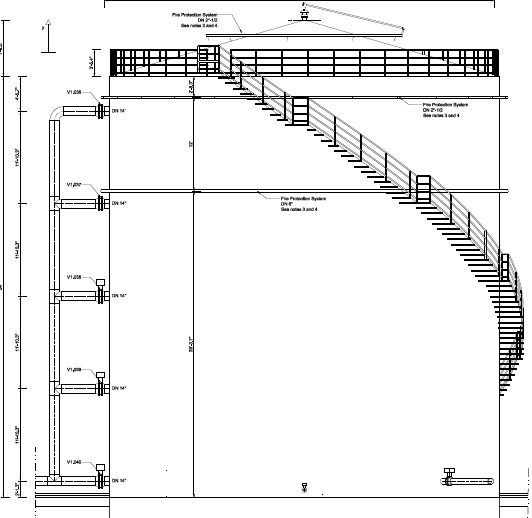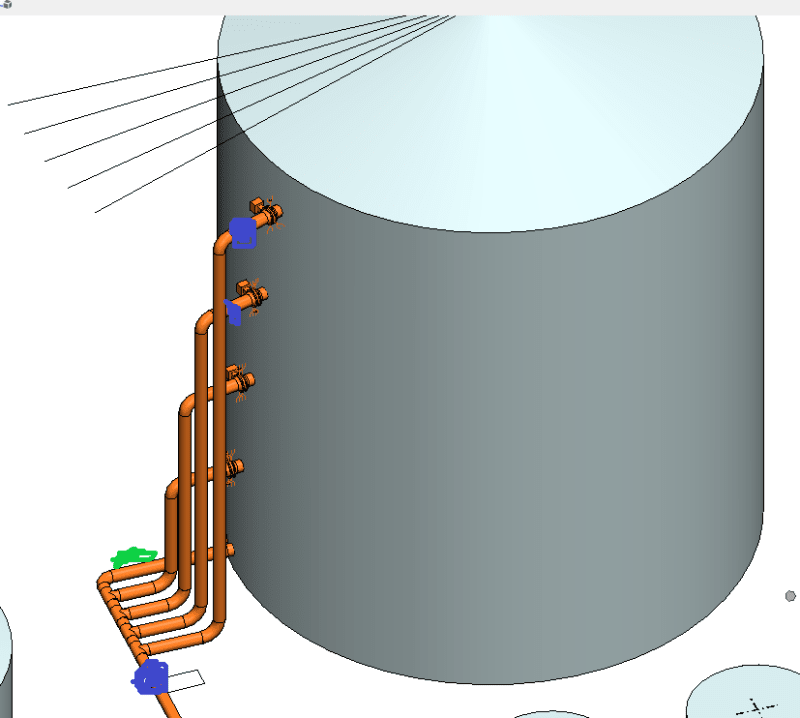Hi,
I am designing a piping layout for a project which connects to various tanks. As per client's specifications they want a communal vertical shaft with inlet/outlets at various levels of the tank to be able to extract the fluid depending on decantation levels.
One of the tanks' vertical shaft is about 15 metres tall and has 5 branches at a n interval of 3 metres. the other tank has a vertical shaft of 12 metres with 5 branches every 2.5 metres.
My problem is that the resulting axial thrust force from the lowest branch and the bending moments of the branches further up the shaft are too great for the nozzle connection.
My question is two-fold:
1) Is this type of inlet usual? From all I've seen there is usually only 1 pipe for 1 inlet.
2) How can I relieve these values?
Thanks in advance!
I am designing a piping layout for a project which connects to various tanks. As per client's specifications they want a communal vertical shaft with inlet/outlets at various levels of the tank to be able to extract the fluid depending on decantation levels.
One of the tanks' vertical shaft is about 15 metres tall and has 5 branches at a n interval of 3 metres. the other tank has a vertical shaft of 12 metres with 5 branches every 2.5 metres.
My problem is that the resulting axial thrust force from the lowest branch and the bending moments of the branches further up the shaft are too great for the nozzle connection.
My question is two-fold:
1) Is this type of inlet usual? From all I've seen there is usually only 1 pipe for 1 inlet.
2) How can I relieve these values?
Thanks in advance!



